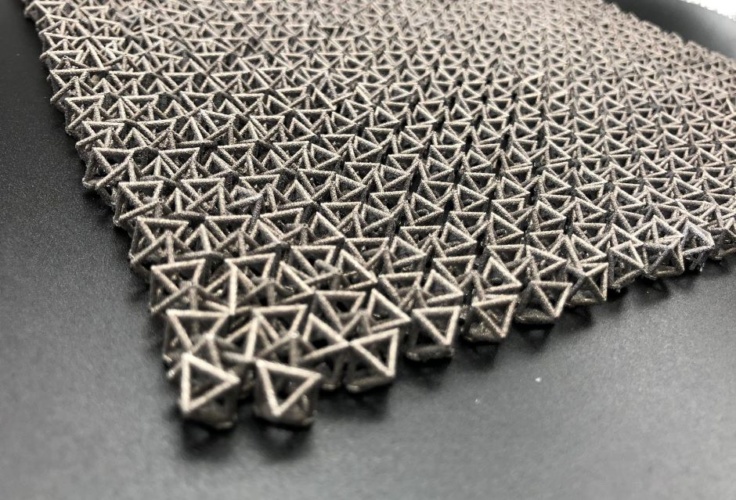Developed by a team at NTU Singapore and the California Institute of Technology (Caltech), the lightweight fabric is 3D-printed from nylon plastic polymers and comprises hollow octahedrons that interlock with each other. When encased in a plastic envelope and vacuum-packed, it becomes 25 times more rigid and can hold up over 50 times its own weight.
First synthetic auxetic material could expand into body armour and sportswear
Body armour given added resilience with silicon
Published in Nature, the next-generation fabric is expected to lead to lightweight armour, protective kit for athletes, and exoskeletons.
“With an engineered fabric that is lightweight and tuneable – easily changeable from soft to rigid – we can use it to address the needs of patients and the ageing population, for instance, to create exoskeletons that can help them stand, carry loads and assist them with their daily tasks,” said Asst. Prof Wang from NTU’s School of Mechanical and Aerospace Engineering, who started this research when he was a post-doc researcher at Caltech.
According to NTU, the fabric has been enabled by a phenomenon called jamming transition. In this transition, aggregates of solid particles switch from a fluid-like soft state to a solid-like rigid state, with a slight increase in packing density. NTU state that typical solid particles are usually too heavy and do not provide enough tensile resistance for wearable applications.
In their research, the authors designed structured particles – where each particle is made of hollow frames – in the shape of rings, ovals, squares, cubes, pyramids and different shapes of octahedrons that are then interlocked together. These interlocked structures can then be formed into chain mail fabric that has a low density and yet high tensile stiffness, using 3D printing technology to print them as a single piece.

They then modelled the number of average contact points per particle and how much each structure will bend in response to the amount of stress applied. The team discovered that by customising the particle shape, there was a trade-off between how much weight the particles will have versus how much the fabric can bend, and how to balance the two factors.
One way of controlling fabric stiffness involves encapsulating the chain mail fabric in a flexible plastic envelope and compacting the fabric using a vacuum. The vacuum pressure increases the packing density of the fabric, causing each particle to have more contact with its neighbours, resulting, for the octahedron-based fabric, in a structure that is 25 times more rigid.
When formed into a flat, table-shaped structure and vacuum-locked in place, the fabric could hold a load of 1.5kgs, more than 50 times the fabrics’ own weight.
The team - a collaboration between advanced manufacturing and mechanical engineers - is now looking to improve the material and fabric performance of their chain mail and to explore more methods of stiffening it, potentially with magnetism, electricity or temperature.




Glasgow trial explores AR cues for autonomous road safety
They've ploughed into a few vulnerable road users in the past. Making that less likely will make it spectacularly easy to stop the traffic for...